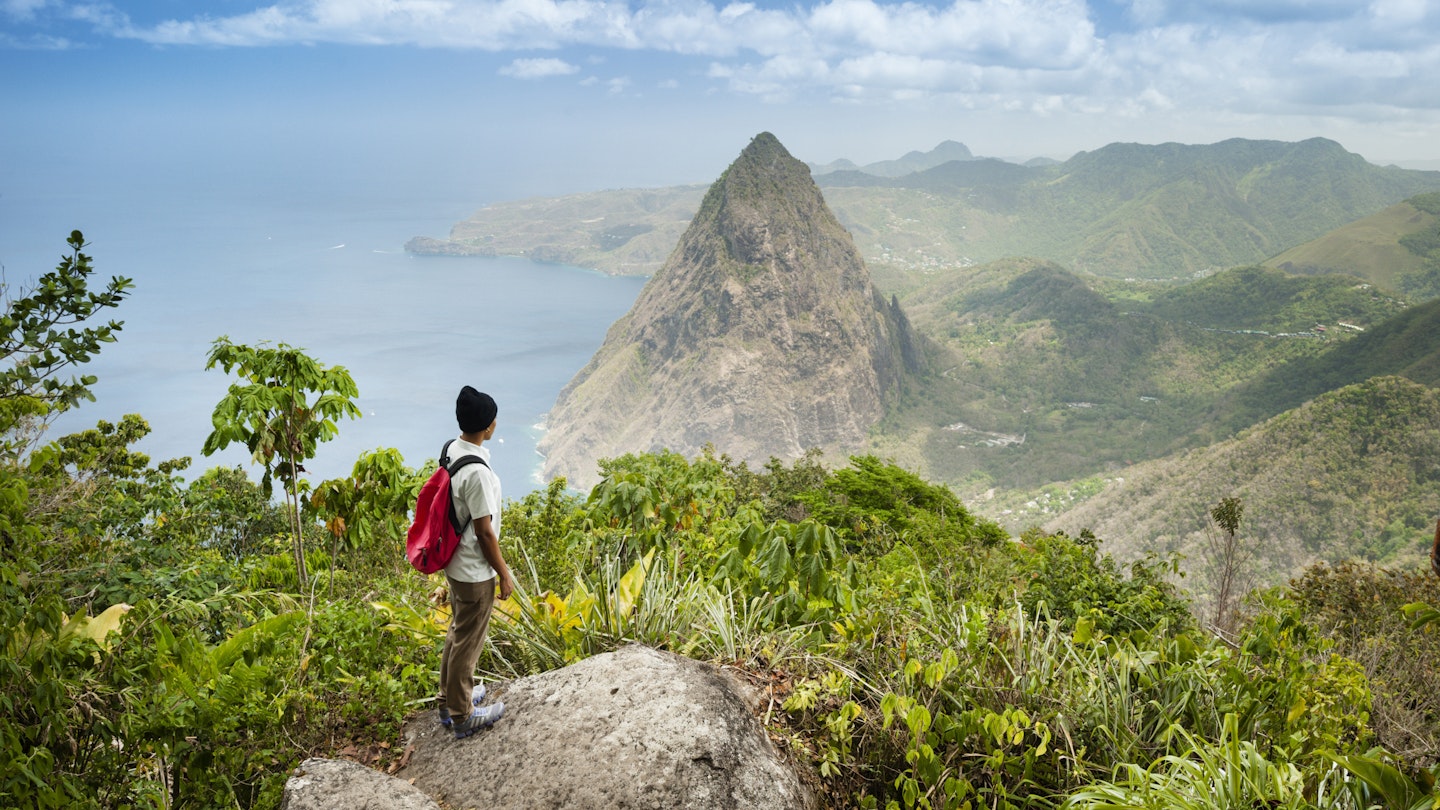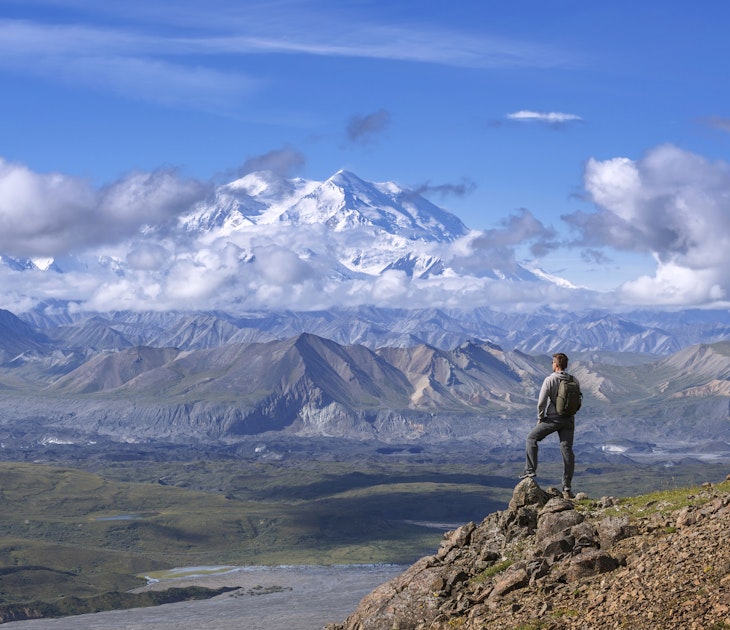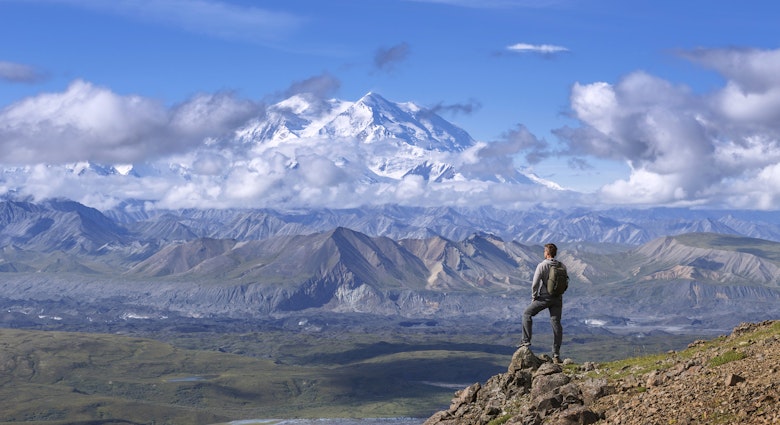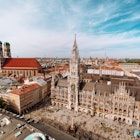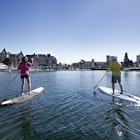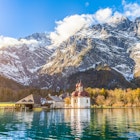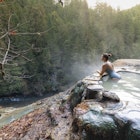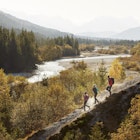Golden sand beaches, the sulfuric pools of the world’s “only drive-in volcano” and the famed twin-peaked Pitons are the hallmarks of any St Lucian getaway, but the island is also flush with dense emerald vegetation, vibrant flowers and diverse marine life.
For adventure – and a back-to-nature respite from 21st-century life – add these national parks and botanical gardens to your island itinerary.

Pigeon Island National Park
Best park for history buffs
Pigeon Island played a pivotal role in the contentious battle between the British and the French for control of St Lucia. It was a strategic outpost between the 17th and 19th centuries, as ownership of the island changed hands 14 times before ultimately remaining under British rule. In 1972 Pigeon Island was joined to the mainland by causeway, giving visitors easy access to the 44-acre monument to St Lucian history.
This living museum – which was declared a national park in 1979 and a national landmark in 1992 – harbors the remnants of the Battle of the Saintes and America’s military presence during World War II. Highlights include the hospital foundation, military latrine, officers’ mess, powder magazine, soldiers barracks and Amerindian caves.
The casual hiker will appreciate Fort Rodney (225ft), named after the British admiral who kept an eye on the French naval base in Martinique. The taller Signal Peak (330ft) significantly ramps up the intensity with a steeper climb and loose, gravelly terrain, making it more suitable for the seasoned hiker. Between Fort Rodney and Signal Peak, you’ll encounter more relics of the colonial era, such as the Gun Slide, Musket Redoubt, Ridge Battery, and US Signal Station.
If you’ve got some time, enjoy a picnic on the expansive lawn or take a dip in the sea at one of the two white-sand beaches on site. There is also the option to enjoy a local meal waterside at Jambe de Bois restaurant (a reference to French pirate Francois Leclerc’s wooden leg) or along the causeway at Thirsty Parrot Beach Bar and Grill.
Visiting Pigeon Island National Park: Pigeon Island is at the northern tip of the island, about a half-hour drive from the capital city. The landmark is open daily year-round, from 9am to 5pm (8:30am to 6:30pm from July to September). Entrance to the park costs US$10 for adult visitors and US$3 for kids 5 to 12 years old. Most of the tours are self-guided, but guided tours are available for US$20 for a group of up to five, with additional guests charged US$5 per person. Be sure to call at least 24 hours in advance to make your request.
No reservations are needed to visit the park without a guide. A guidebook with a small map and details on the geological, ecological and historical elements of Pigeon Island can be purchased on arrival. If you’re planning on climbing the park’s peaks (which is part of the guided tour), carry a pair of hiking boots along with sunscreen and insect repellent. The tour is not wheelchair accessible.
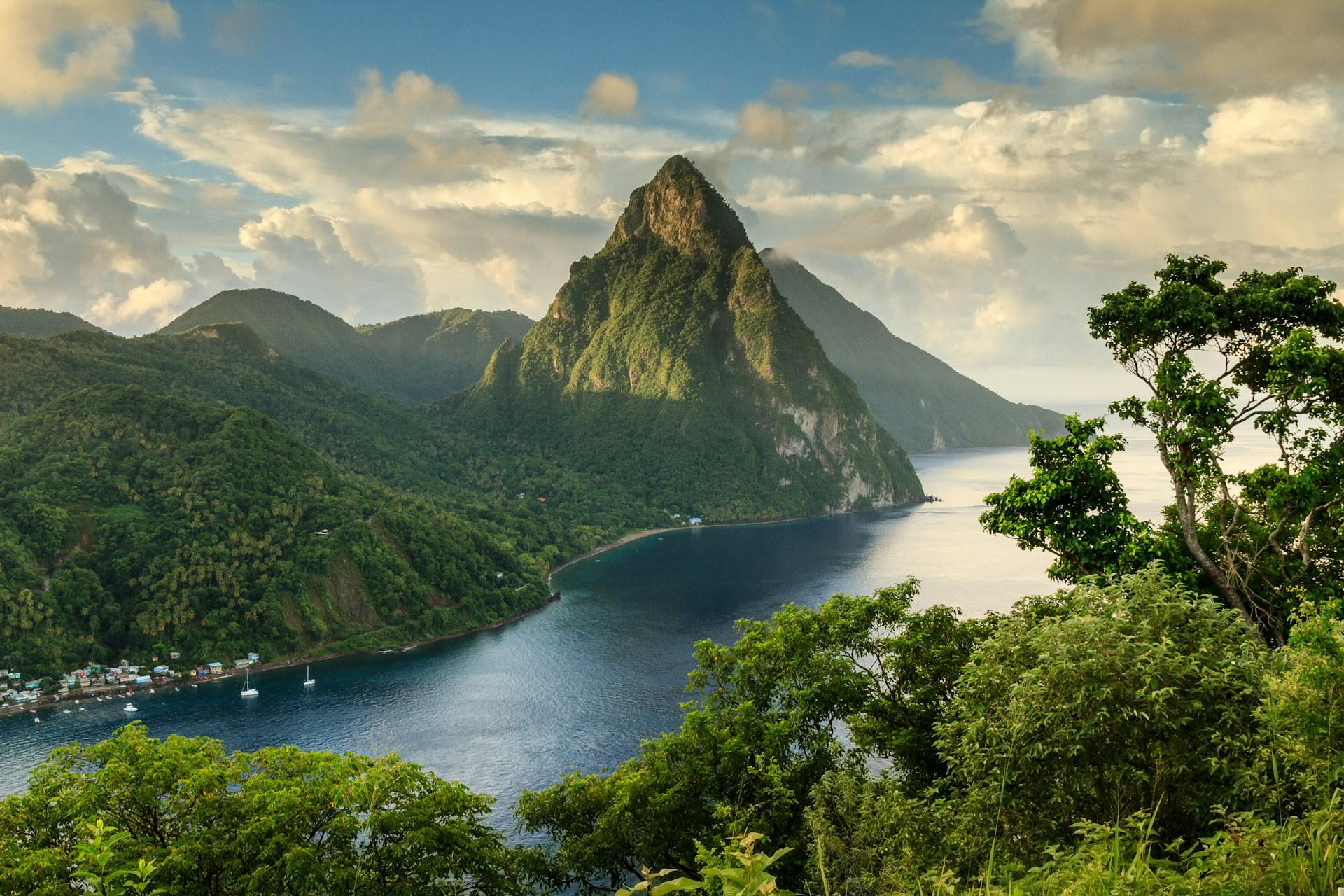
Soufrière Marine Management Area
Best park for scuba divers, snorkelers, and water lovers
Water-sports lovers, especially those partial to snorkeling and scuba diving, will find a slice of heaven in the depths of the Soufrière Marine Management Area. The protected area stretches across 6.8 miles (11km), from Anse L'Ivrogne and its well-preserved coves in the southwestern parish of Choiseul to Rodney Bay in the north. It is sectioned off into five zones, including marine reserves for the regeneration of fish stocks, fishing priority areas where commercial fishing takes precedence, recreational areas for beach activities and yacht-mooring areas for visiting yachts.
The final zone, designated for multiple uses like diving and snorkeling, is arguably the expansive area's pièce de résistance. These pockets of marine life are in close proximity to some of the premier hotels on the island, including Sugar Beach, which boasts a celebrity clientele, and the adults-only hideaway Ti Kaye Resort & Spa. Luxury honeymoon haven Anse Chastanet’s beach is just yards away from a reef considered to be one of the best snorkeling destination in the Caribbean, where the remarkably clear water allows glimpses of soft coral, colored sponges, boulder coral, brain coral and more than 150 different species of fish. There are also opportunities for kayaking, tubing, windsurfing and sunfish sailing, but jet skiing is prohibited.
Visiting Soufrière Marine Management Area: The area's sprawling nature means there are multiple points of entry along the coast. Visitors will likely need to be transported to their activities by boat, so consult with someone at your accommodations or contact the Soufrière Marine Management Area directly for information on safely getting to your destination. The entrance fee is US$1, US$5 for a diving day pass, and US$15 for an annual dive permit. The use of the moorings requires a Coral Conservation Permit, which starts at US$20 per night. Booking water activities through your hotel may incur a separate fee, and all activities must be guided.
Mamiku Botanical Gardens
Best park for birdwatchers
Along the island’s east coast, between the villages of Praslin and Mon Repos, sits Mamiku Botanical Gardens. The gardens are an extension of the Mamiku Plantation, which was gifted to Baron de Micoud in the early 1700s by the King of France Louis XIV. The property has changed ownership over multiple generations – Mamiku is the final iteration of a series of names bestowed upon the estate, including “Union de Micoud”, “Madame de Micoud” and “Ma Micoud" – and now rests in the hands of Veronica E. Shingleton-Smith, a landscaper designer with extensive experience in creating floral gardens. Mamiku’s 12 acres of natural woodlands feature an orchid and medicinal-herb garden that doubles as an oasis for bees, butterflies and birds, with endangered white-breasted thrashers, golden orioles, black finches and many more flitting among the riot of exotic tropical flowers.
Visiting Mamiku Botanical Gardens: It’s roughly a 45-minute drive from the north side of the island to the property, while visitors from the south can enjoy a much shorter commute – just 20 minutes. Mamiku Botanical Gardens is only open a few days a week, so it’s best to contact the estate beforehand to ensure availability. On open days, you can wander for as long as you want between 9am and 5pm.
Tours are also available according to your preferred activity, in the categories of bird watching, garden lovers, or hiking. Options range from a full-day tour with a picnic lunch and river bath to a half-day door with local staples like hot bakes and cocoa tea or rum punch. Entrance starts at XCD$20 (US$7) for independent travelers. The property is partially wheelchair accessible, with a handicapped bathroom and a ramp onto the terrace for viewing the gardens.
Maranatha Gardens
Best park for seeking peace
A "prayer sanctuary" with guest houses and a restaurant, Maranatha Gardens is a respite within an already tranquil island paradise. Maranatha means “Lord come” or “Come Lord,” which is quite fitting for a space created to transport visitors to a blissfully peaceful existence, and its unhurried serenity has made it a popular pick for intimate weddings and photography sessions alike. The garden is teeming with 100 plant species, including evergreen perennials, torch lilies, ginger lilies, dragon's breath celosias and heliconia lobster claws. Further exploration reveals a koi carp reflection pool and the Pitons' peaks standing tall just beyond the brush.
Visiting Maranatha Gardens: From the north, follow the west coast road to Colombette, Soufrière. The gardens are tucked into a hairpin bend, just before The Beacon Restaurant, which is also part of the owner’s portfolio. If your accommodations are in the south, drive northbound until the restaurant comes into view. Entrance to the garden is free.

Union Orchid Garden
Best park for flower enthusiasts
Union Orchid Garden is the product of a collaboration between the governments of the Republic of China (Taiwan) and St Lucia, which started in 2009. The property features two greenhouses with a combined total area of 1500 sq meters and the capacity to harbor up to 50,000 adult flowering plants and an additional 100,000 tissue culture plants. As the name indicates, the main attraction here are orchids, a flower species known as much for its fragility as its intense color and fragrance. Anthophiles will find a selection that includes dendrobiums — with more than 2000 species, the largest orchid group, identifiable by their pastel hues — phalaenopsis, cattleyas, oncediums, vandas, as well as a mélange of cut flowers, root and tuber crops and local produce.
Visiting Union Orchid Garden: The Union Orchid Garden is currently revamping its tour offerings but guests can still pop in for an informal visit. It’s a 20-minute drive from the north of the island and 10 minutes from the city to the Union community. The Dame Pearlette Louisy Primary School is an easy marker just before the garden.
You may also like:
The best beaches in St Lucia
How to get around the mountainous island of St Lucia
From verdant rainforests to beachey towns: the 7 best hikes in St Lucia
St Lucia wants travelers to make the most of their stay with a six-week trip

